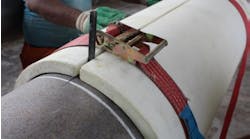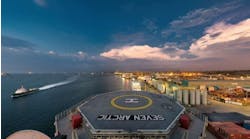Offshore staff
ABERDEEN, UK – Gas2 is claiming a breakthrough in a gas-to-liquids (GTL) process that could lead to commercial development of stranded offshore gas reserves.
The company completed an extended test of its proprietary gas reformingsyngas (synthesis gas – a mixture of hydrogen and carbon monoxide) reactor at its GTL pilot plant at the Wilton Research Center in northeast England. Testing achieved the predicted conversion of methane to syngas.
The 1 b/d plant can convert methane or natural gas to syngas using Gas2’s patented catalytic partial oxidization process. Produced syngas is then used as a feedstock for the company’s Fischer Tropsch (FT) liquids unit, which it claims is a lower cost and more productive method of converting natural gas to liquid hydrocarbons than other current processes.
Gas2 has developed a catalytic ceramic-based, semi-permeable membrane that is common to both reactor cores.
The next step is to demonstrate production of FT liquids using feedstock from the syngas unit. Further testing is also under way of the syngas reactor over a range of operating conditions and with different membrane designs.
Mike Fleming, managing director, said: “The tests confirm our belief that catalytic partial oxidization of natural gas to synthesis gas based on porous ceramic membrane core technology is the right way forward for small-scale, highly efficient GTL reformers.”
Potential applications for the technology include smaller, more remote gas reserves that might otherwise be uneconomic to develop; and remote offshore oil fields with unwanted associated gas, in areas where flaring is prohibited or where gas re-injection wells are either costly or detrimental to reservoir performance.
10/02/2013


